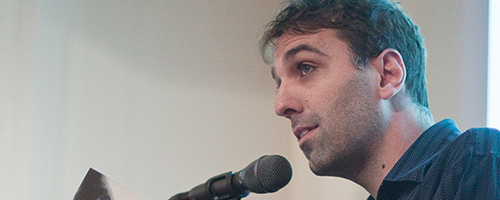Kulongoski pushes higher ed grant program
It’s been nearly a year since Gov. Ted Kulongoski first unveiledhis plans for a dream grant intended to cover tuition for Oregoncollege students to the state legislature. But over that year, theprogram-Access Scholarships for Education Trust, or ASET- has beengoing through some fine-tuning and may almost be ready forapproval.
Kulongoski hopes to have the finished proposal ready for thenext legislative session in January, when it could be put beforevoters as an amendment to the state constitution – a step theGovernor hopes will keep the program from being cut in hard budgettimes, much like the Oregon Opportunity Grant has been in recentyears.
“I think that what you have to do is understand that everystudent in this state needs to have access to a postsecondaryeducation,” Kulongoski said yesterday in an interview with theVanguard. “One of the areas Oregon has been lacking in is givingopportunities to qualified students to obtain a postsecondaryeducation.”
Tim Nesbitt, a member of the State Board of Higher Education andco-chair of its subcommittee on access and affordability, echoedthis sentiment, stating that the ASET program is “a prioritybecause Oregon measures up very badly for post-secondaryeducation.”
“What I do not want Oregon to become is like America was before1949,” Kulongoski said, when the only people who could go tocollege “were those of wealth and means.”
The Governor is also dedicated to stepping up other areas ofhigher education. Getting into an institution, he said, is only thefirst step.
Kulongoski would also like to ensure “a quality, first ratepostsecondary education,” especially within the individual academicprograms.
Additionally, he wants to make the university system moreefficient for students.
“I am more interested in trying to see that students haveaccess, they have excellence and a state system administered in anefficient manner.”
The program is estimated to cost around $2 billion, but no oneis discussing any concrete means of funding just yet.
When Kulongoski made his proposal about ASET to the statelegislature last year, he had some ideas for funding. What hediscovered, however, was that “everybody wanted to argue about thefunds, not argue about the principle that I wanted toestablish.”
One idea that is still being considered as a possible means forfunding is using a percentage of capital gains taxes. Partialprivate funding is also a possibility.
The Access and Affordability Committee will be making theirreport on ASET to the board of higher education at their nextmeeting June 4 in Ashland.
Nesbitt said the committee will be discussing funding throughoutthe summer and will hopefully have a complete proposal bySeptember, and definitely in time for the next legislative sessionin January.
If the legislature approves the proposal, it will likely bepresented to voters in a special election in November 2005, thoughNesbitt noted that it could be later.
Whenever that happens, though, Kulongoski is confidant ASET willbe well received by voters.
“Most parents know today that the future success their childrenwill have in life is dependent on an education,” he said. “Thefuture is your child having the opportunity to actually get thateducation.”
|
What is ASET? In designing the new financial aid program, the Access andAffordability Committee has come up with several options formeeting their goal of increasing bachelor’s degrees by providingbetter access to college for low-income students. 1. Variable grant based on sector charges 2. Maximum grant award tied to community college tuition and feecharges 3. Two-tiered maximum grant tied to public-sector tuition andfees (2-year or 4-year) 4. Two-tiered maximum grant tied to level of study |
|
The ASET debate: Where can the grant moneygo? Members of the Access and Affordability Committee, along withothers from the State Board of Higher Education and Gov. TedKulongoski, are still struggling with the question of where grantmoney from ASET should be used. — Sara Gundell |




